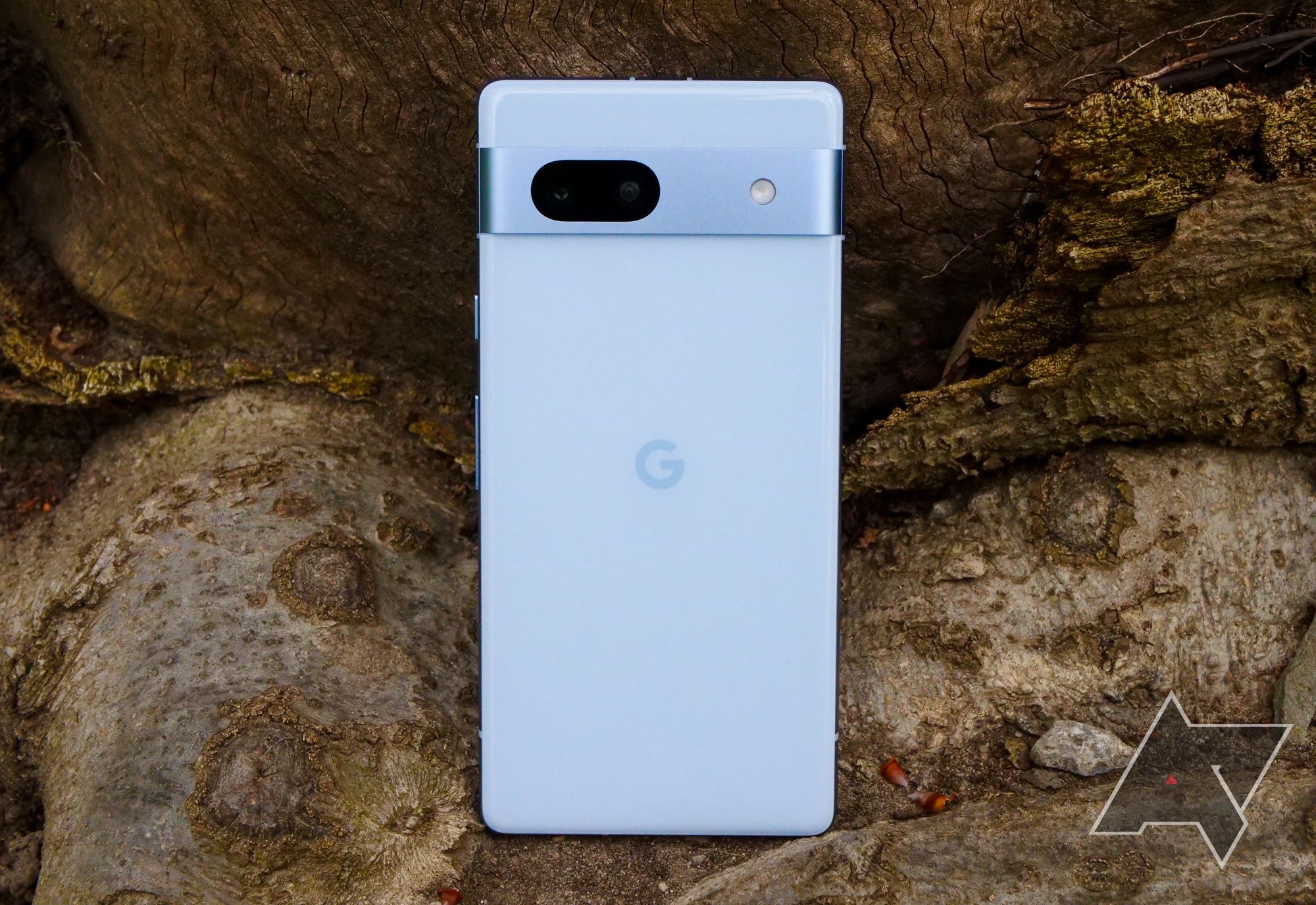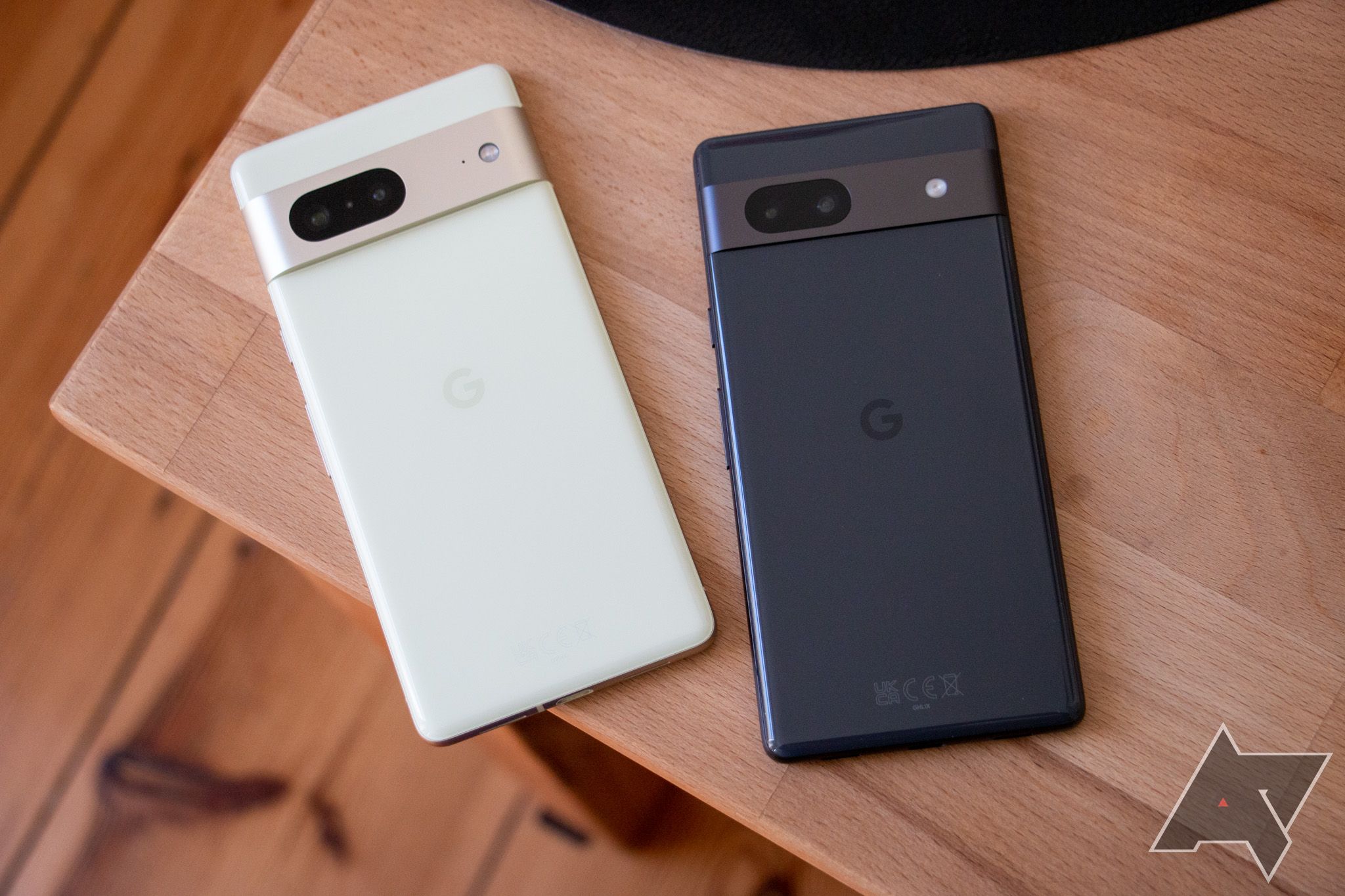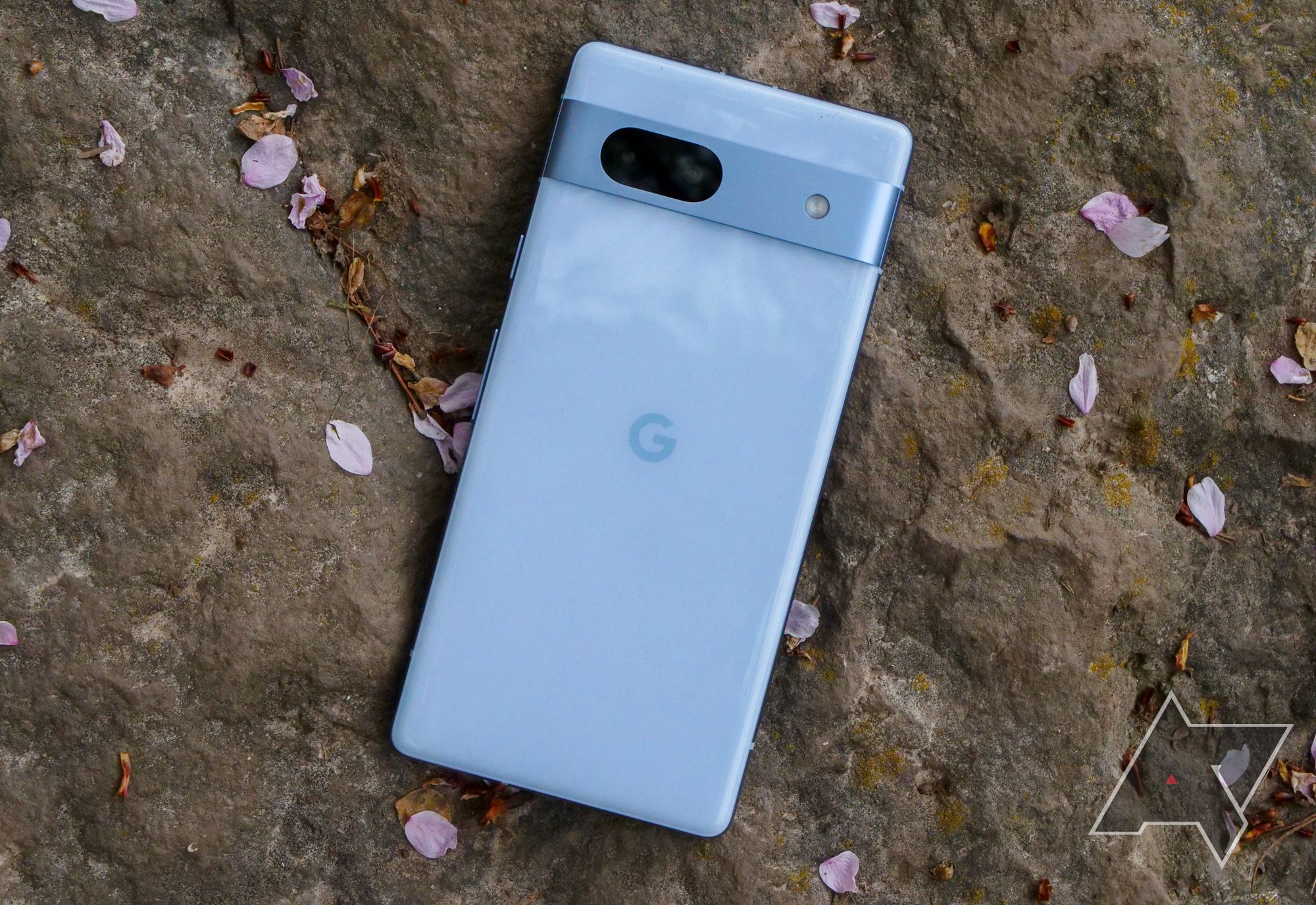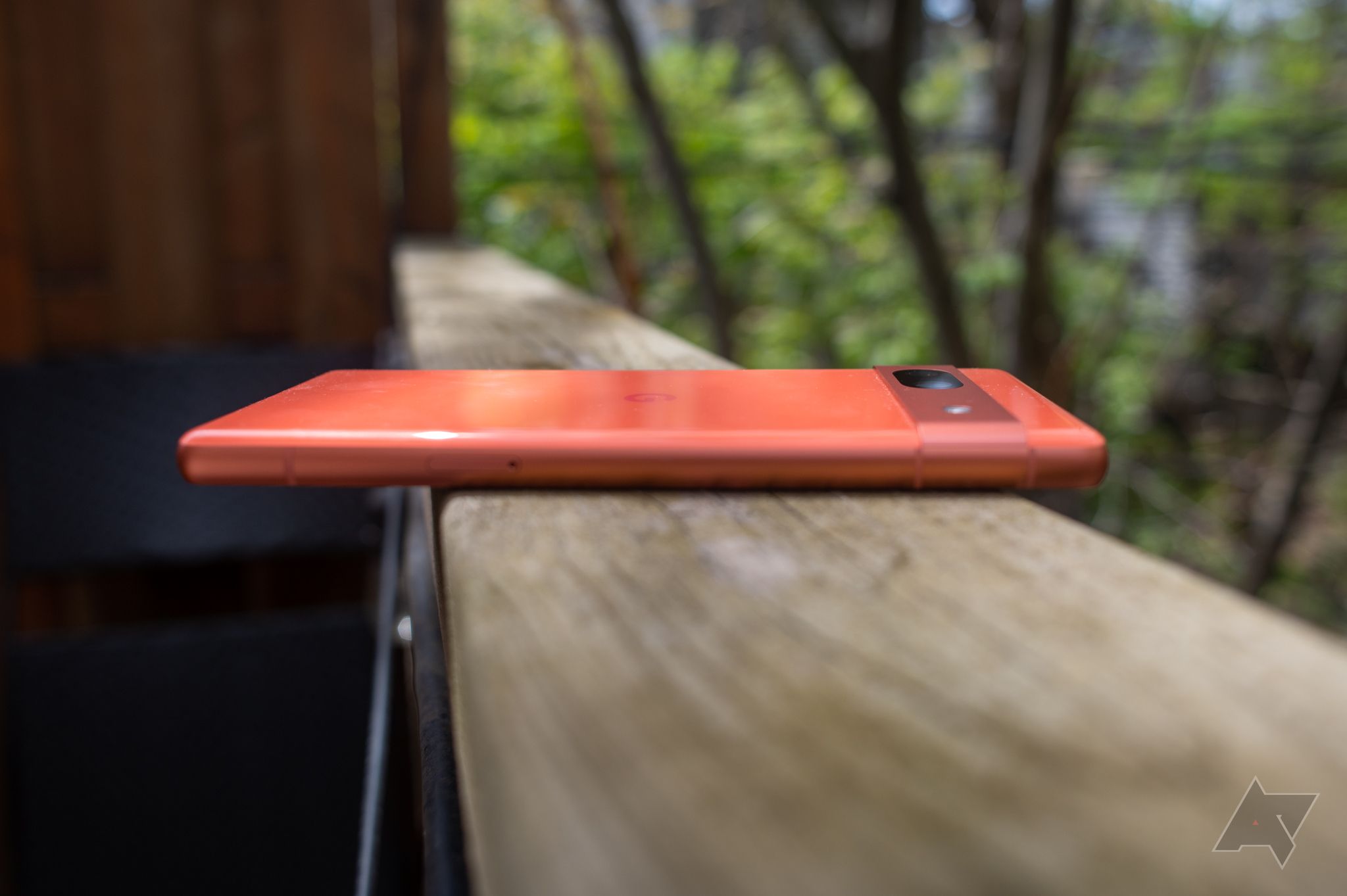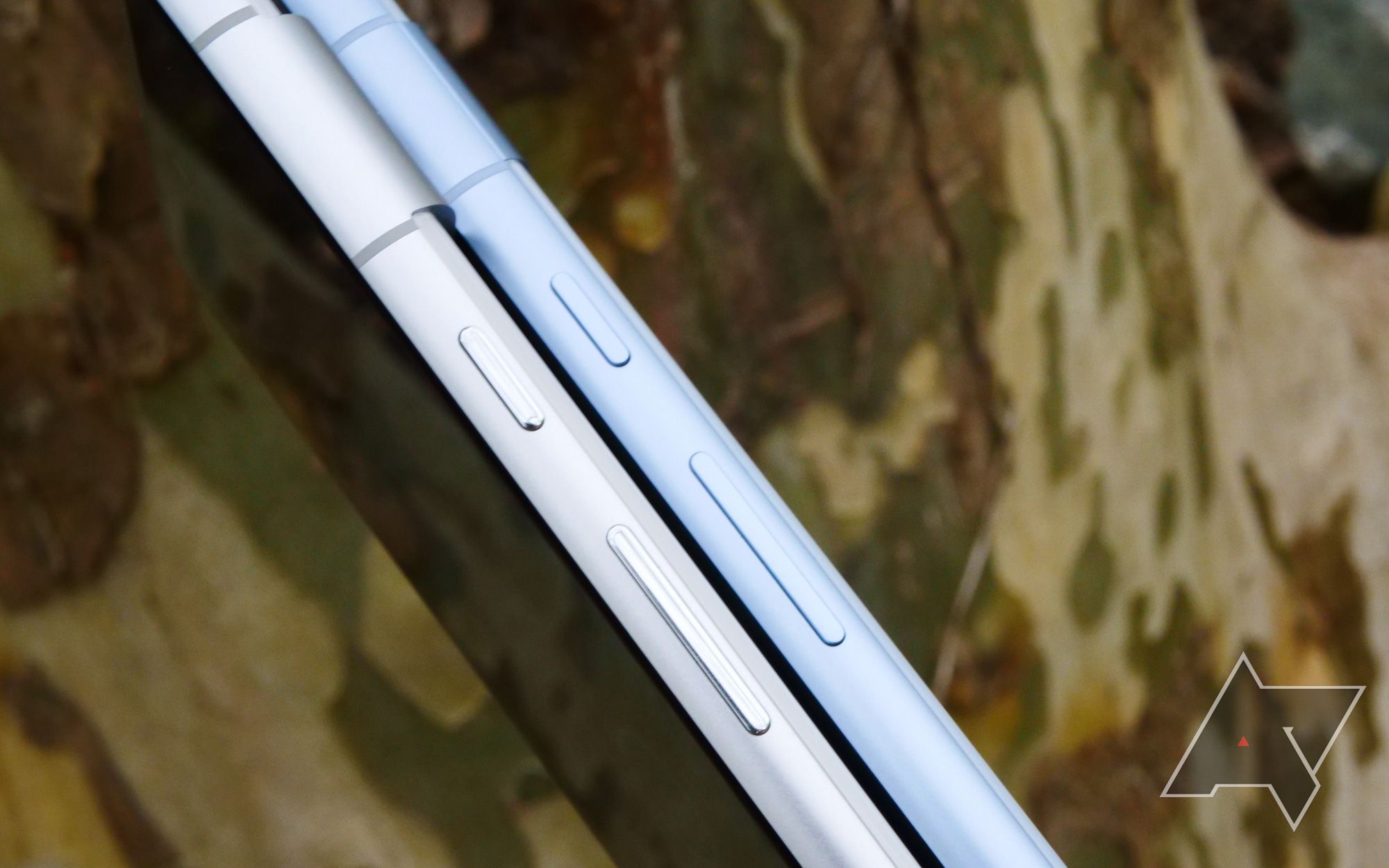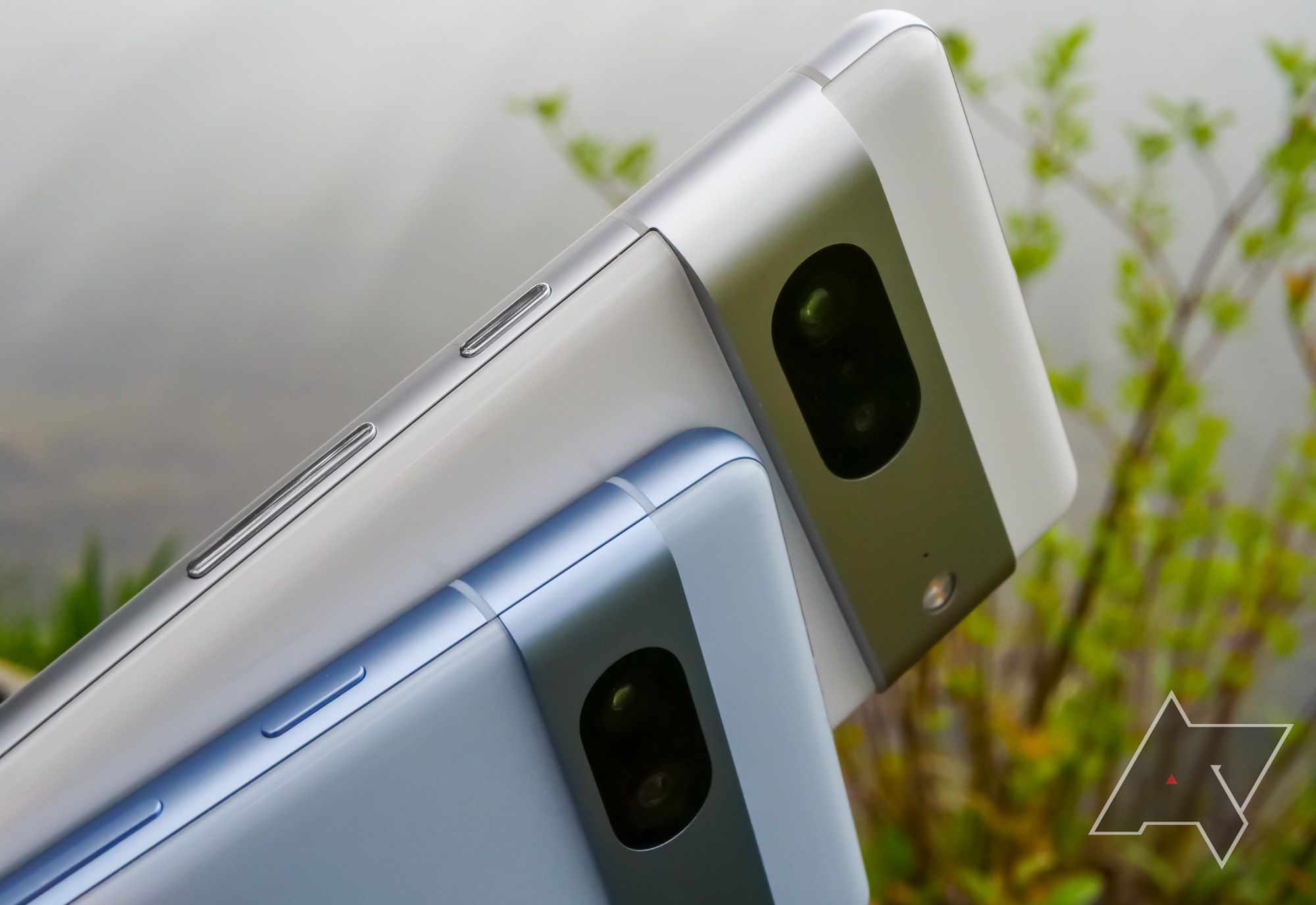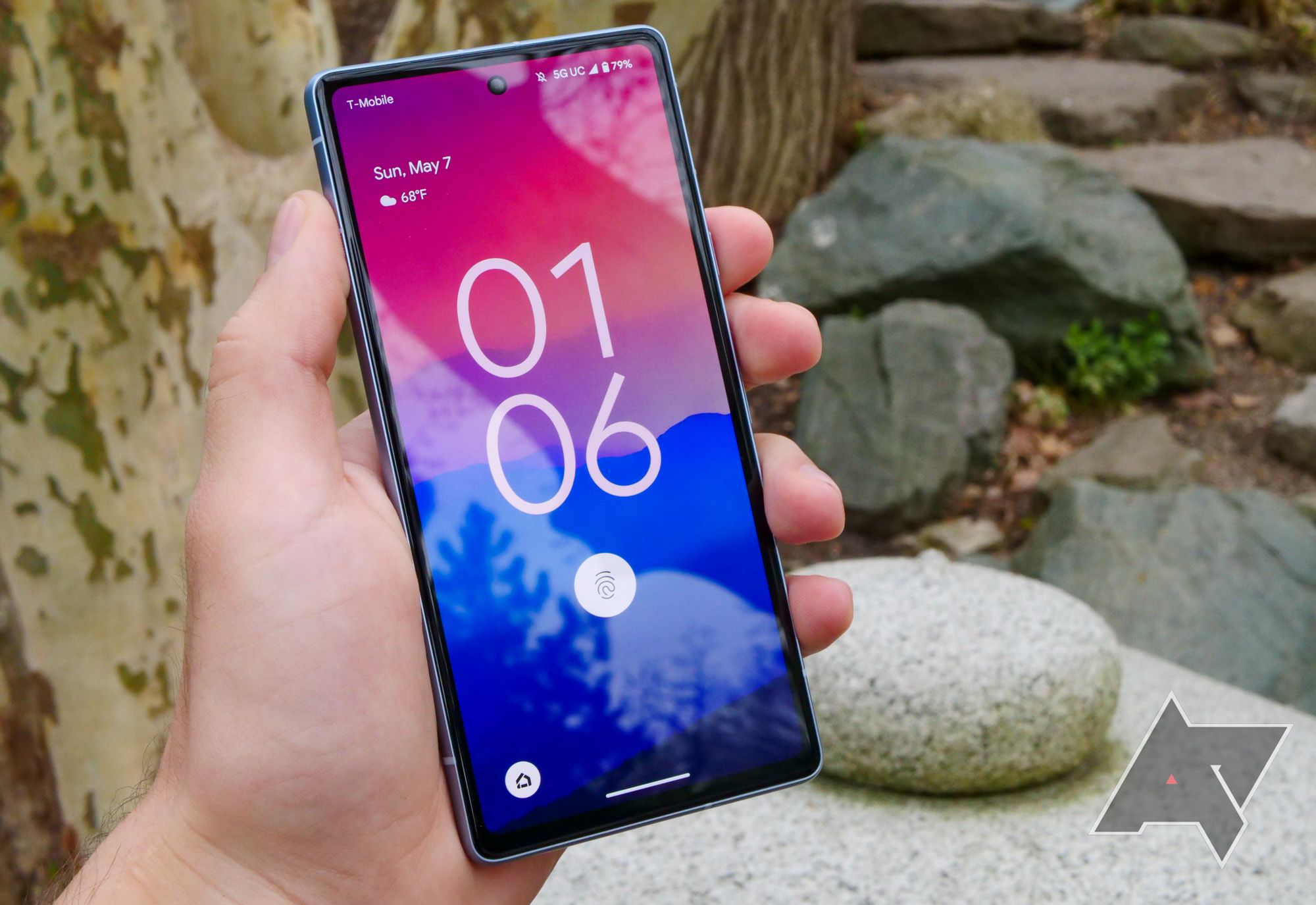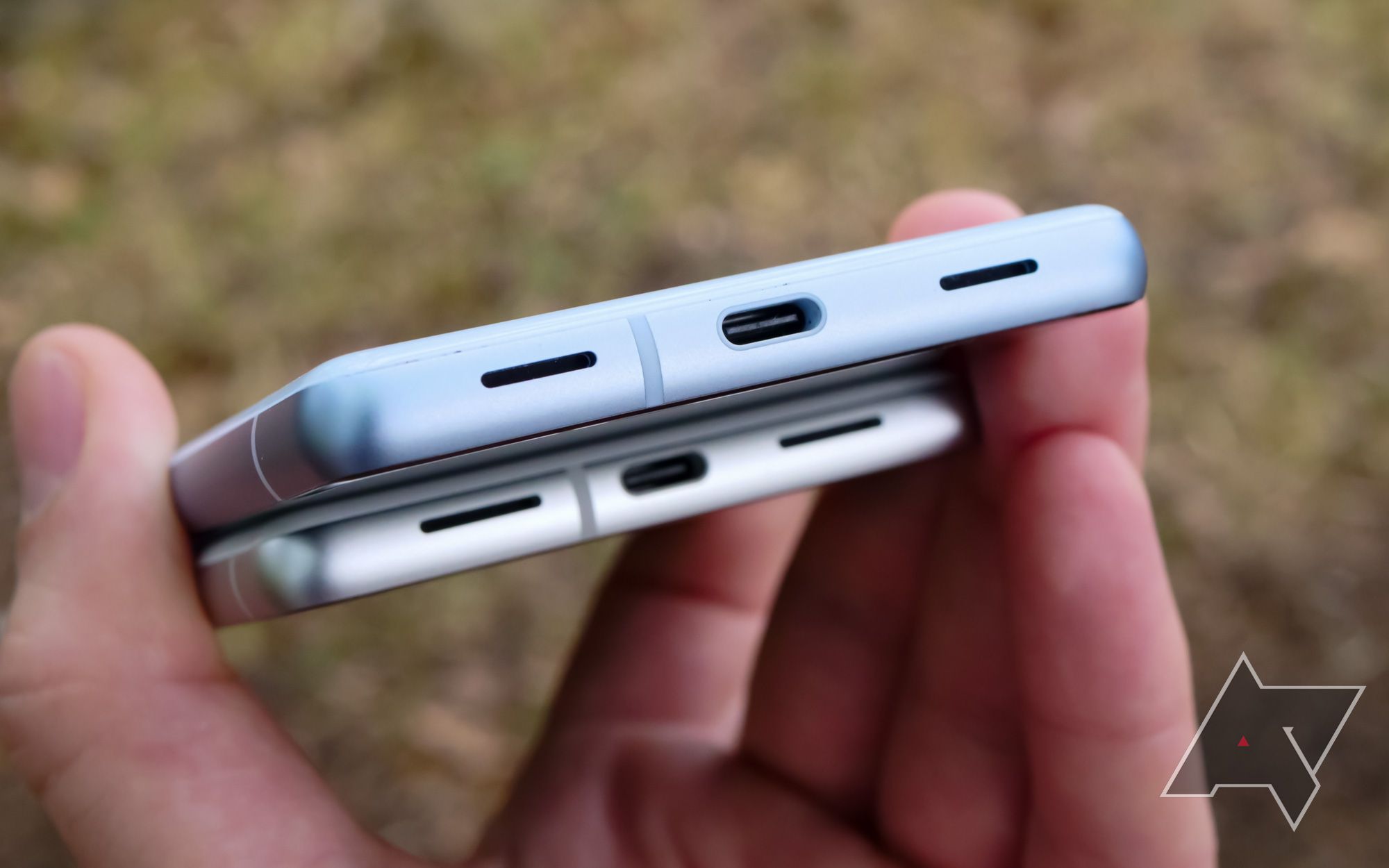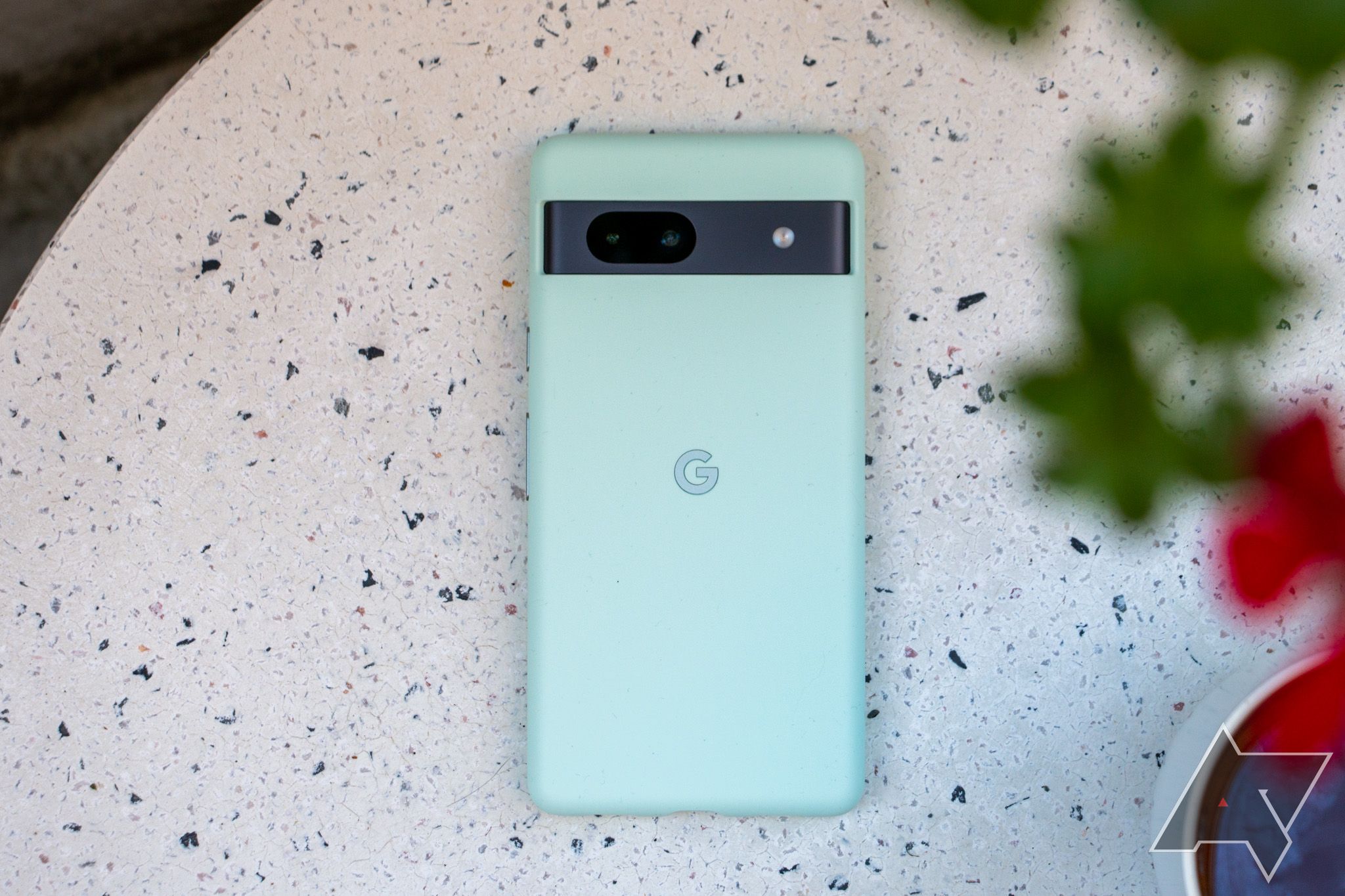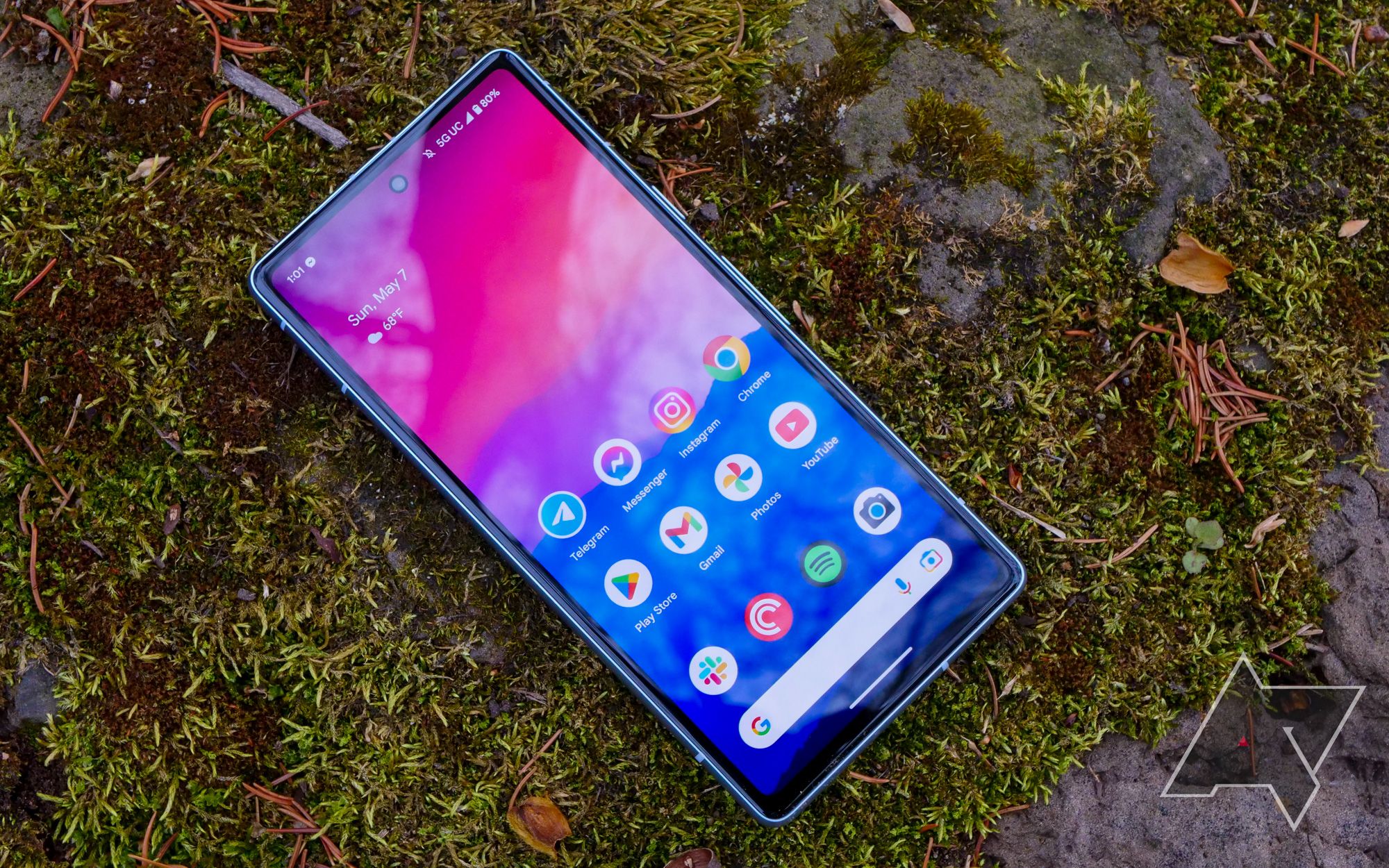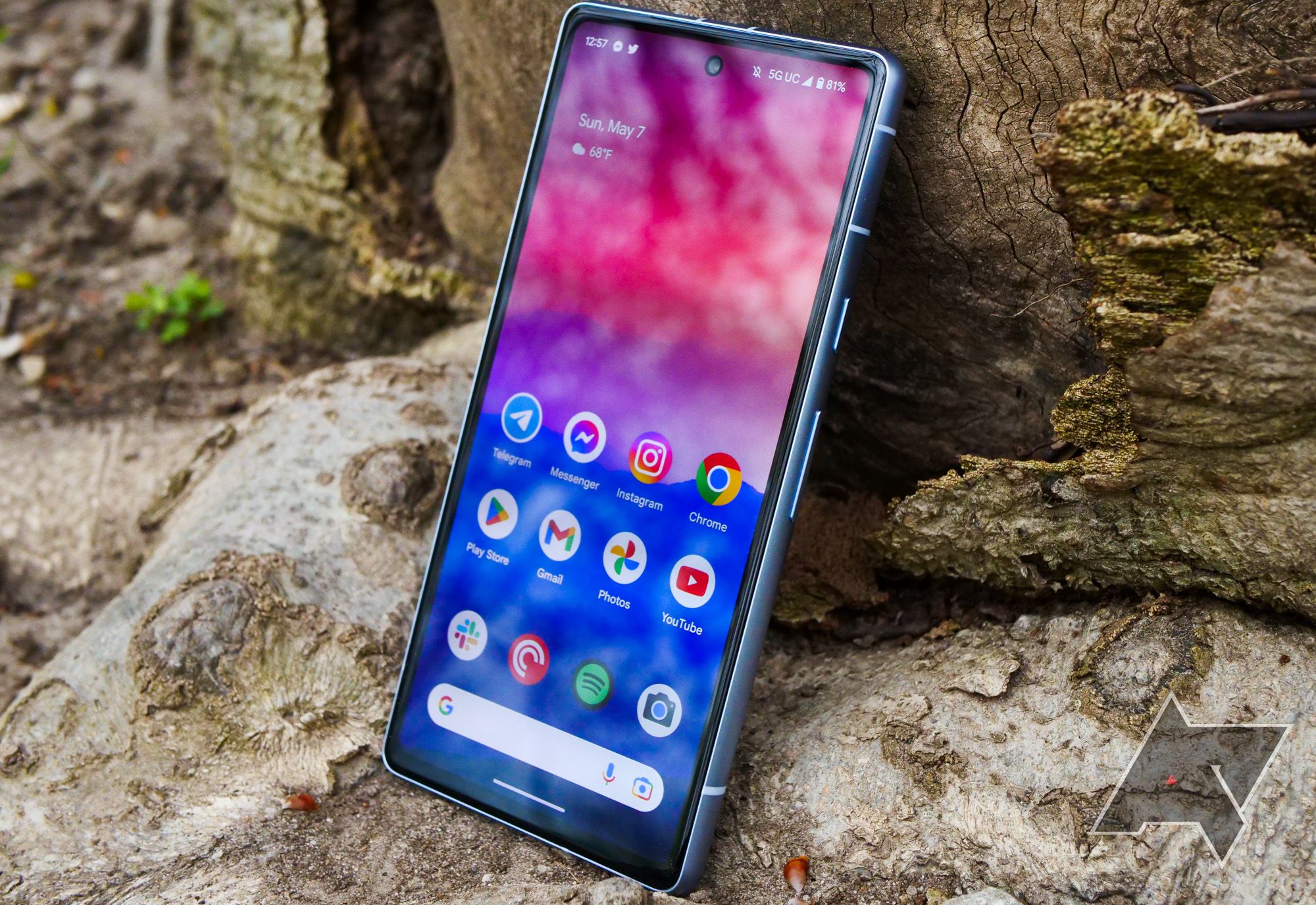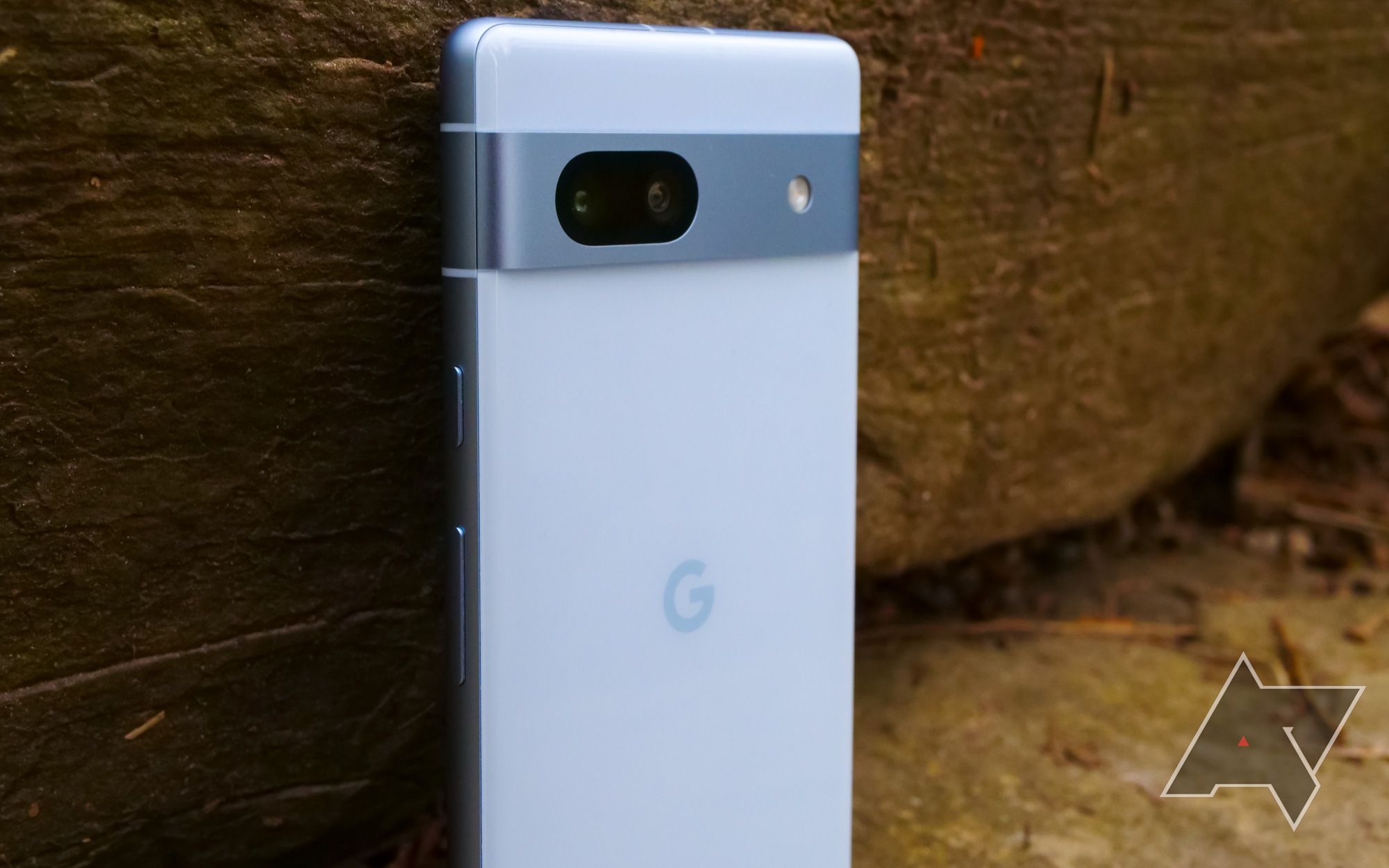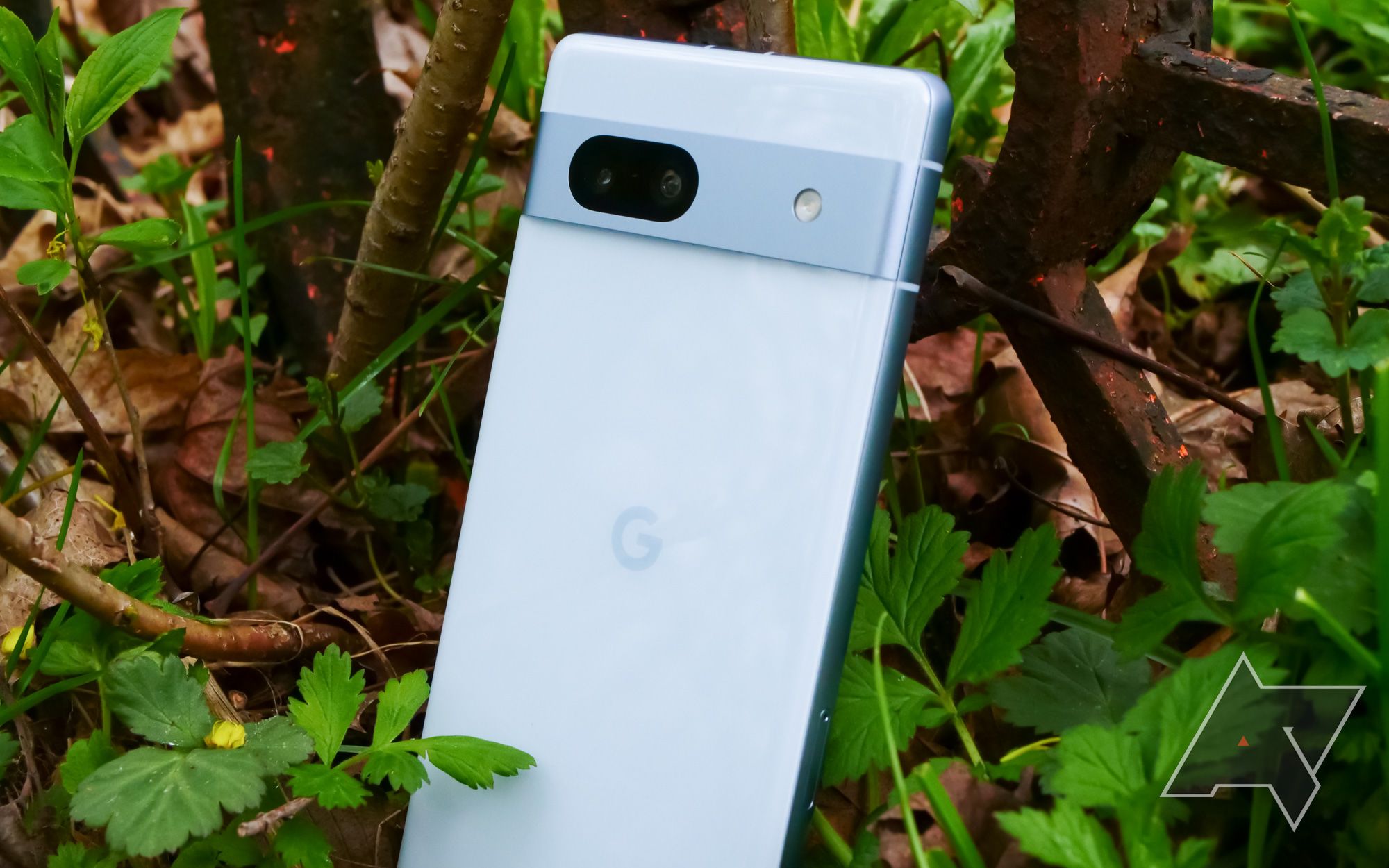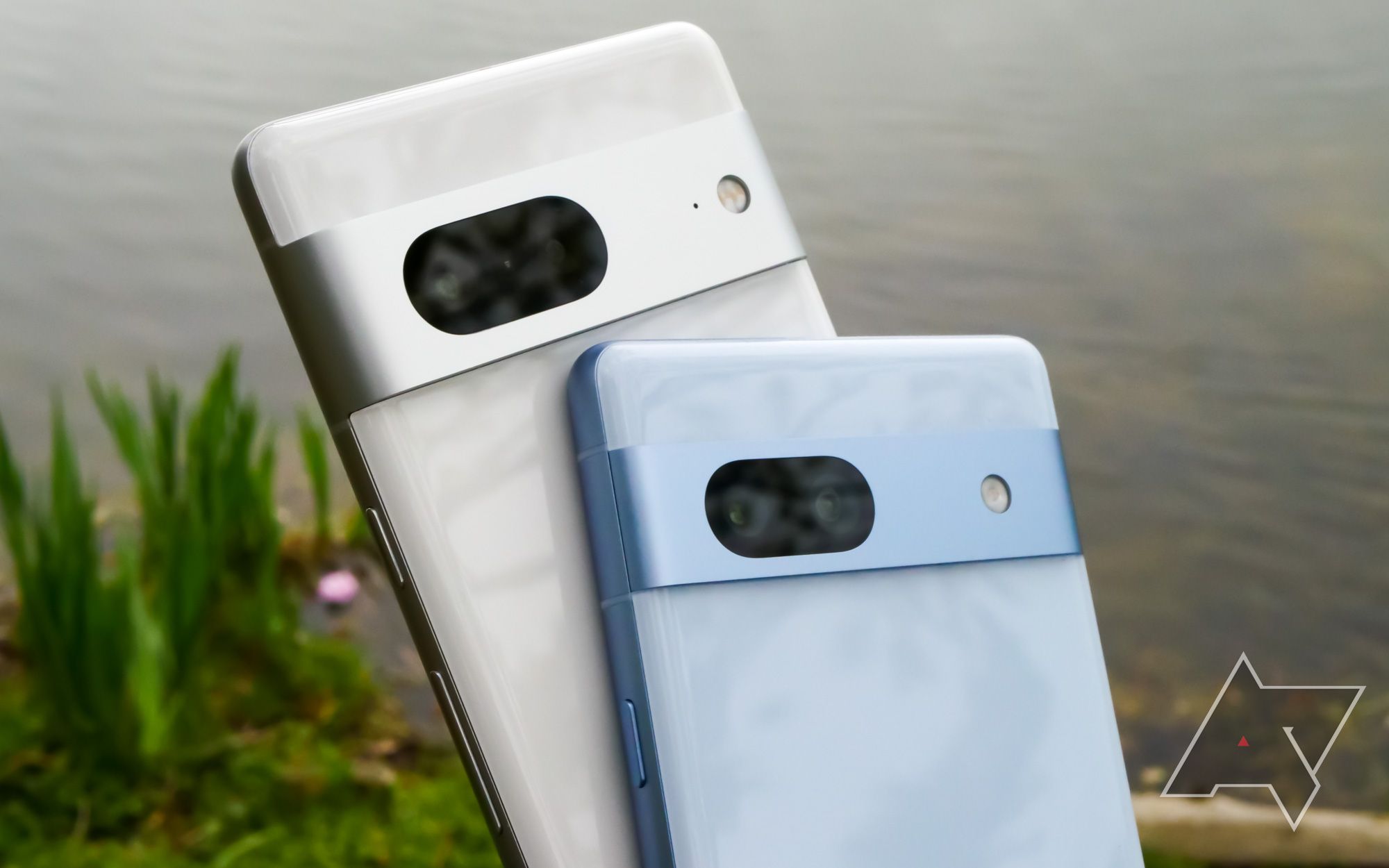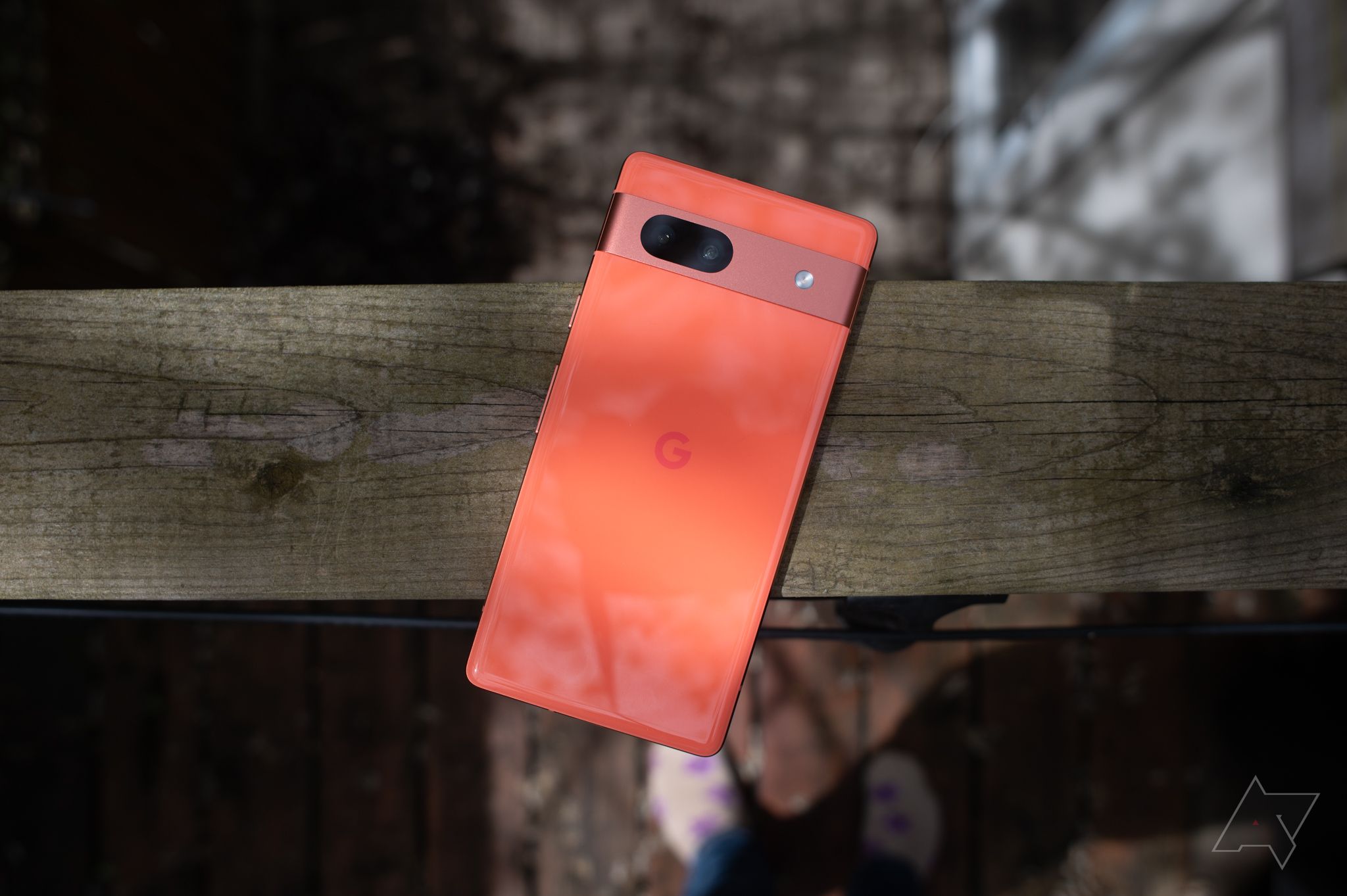Believe it or not, Google's A-series has only been around for four generations now. Kicking off in 2019 as a low-cost alternative to the Pixel 3 series, the company's midrange smartphones have always provided consistently impressive experiences, even in years when the mainline devices floundered or failed to meet their stated goals. With the Pixel 7a, Google is attempting to pull off something even more impressive: bringing 85 percent of the Pixel 7 experience for just 85 percent of its original cost.
More than last year's Pixel 6a, this phone feels like it's designed to replace its namesake. But in trying to deliver as much of the mainline experience as possible, the A-series seems to be struggling to find an identity. In fact, just four years into its midrange experiment, it feels like Google might've lost the plot on what made this series of smartphones so special.
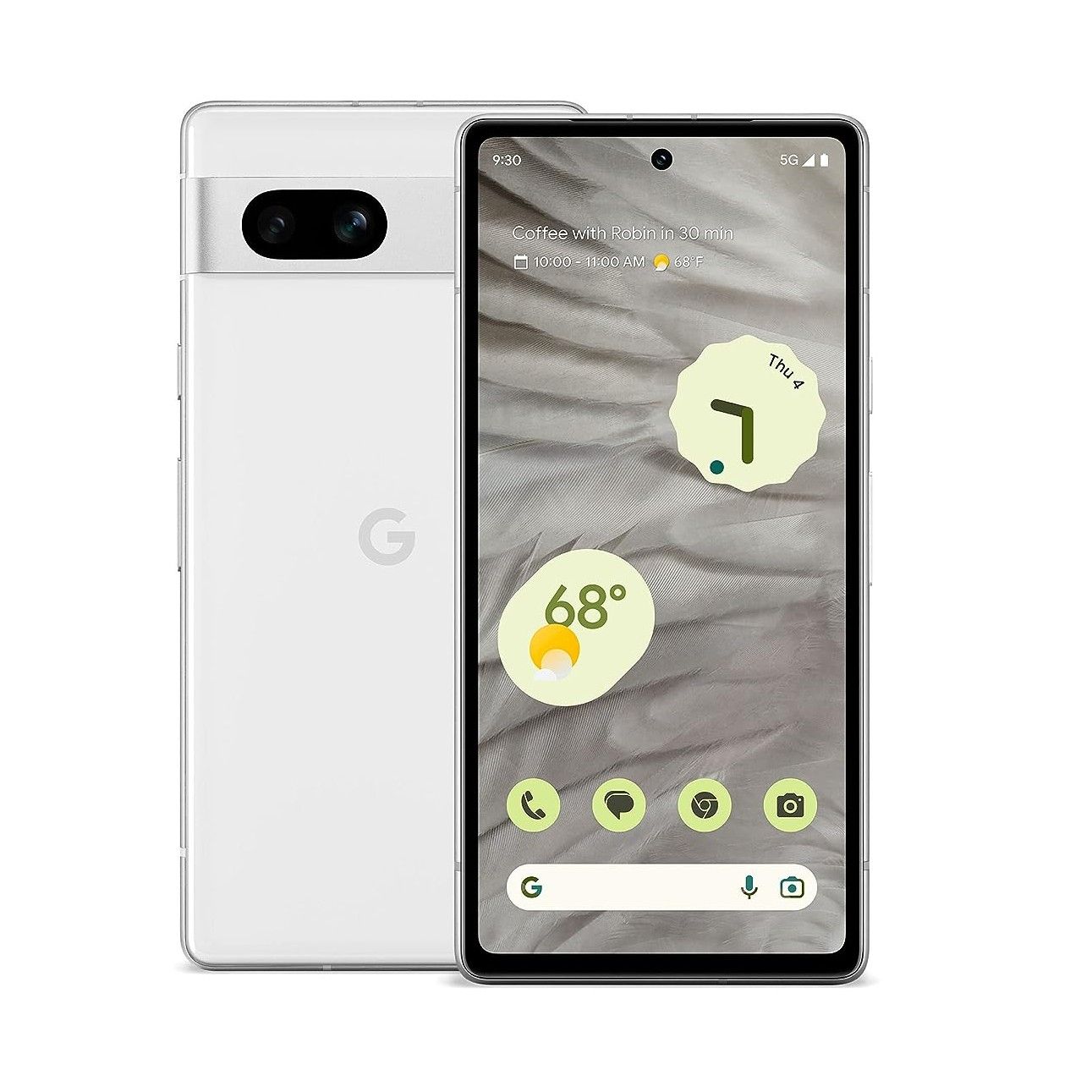
Google Pixel 7a
The Pixel 7a is Google's most advanced A-series device yet, nearly matching the Pixel 7 spec-for-spec. But with those extra features comes a price hike up to $500, and combined with some subpar battery life, it could be the first A-series Pixel device not worth your money.
- SoC
- Google Tensor G2
- Display
- 6.1" FHD, OLED, 60Hz/90Hz refresh rate, HDR support
- RAM
- 8GB LPDDR5
- Storage
- 128GB
- Battery
- 4,385mAh
- Ports
- USB-C
- Operating System
- Android 13
- Camera (Rear, Front)
- 64MP 82°, 13MP 120° ultrawide, 13MP 95° front
- Front camera
- 13MP, f/2.2
- Connectivity
- NFC
- Dimensions
- 152.4 x 72.9 x 9mm
- Weight
- 193g
- IP Rating
- IP67
- Price
- From $374
- Security
- Titan M2, face unlock, fingerprint reader
- Great camera, as always
- Some nice quality-of-life improvements, like 90Hz and wireless charging
- New colors!
- Battery life is purely average, even in the best of cases
- Those quality-of-life improvements come with their own caveats
- Price hike puts it within spitting distance of the Pixel 7
Availability and network
The Pixel 7a is available in a whopping seventeen countries this year, including the US, Canada, Australia, Denmark, France, Germany, India, Ireland, Italy, Japan, Netherlands, Norway, Singapore, Spain, Sweden, Taiwan, and the UK.
As with previous launches in the US, it's available on all three carriers, their respective MVNOs, and — of course — Google Fi. You can also purchase the Pixel 7a unlocked following its I/O announcement at the retailer of your choice, though the coral colorway is a Google Store exclusive. If you're looking for a mmWave-supported model, you'll need to buy through Verizon — and you'll need to pony up some extra cash. Otherwise, the Pixel 7a is available in one configuration: 8GB of RAM and 128GB of storage for $500.
I've already explored my thoughts about this $50 price hike back when the Pixel 7a was but another phone churning through the rumor mill, so I'll leave it at this: I think Google's current smartphone lineup places the 7a in a weird spot. With the Pixel 6a hanging on at $350 and the Pixel 7 available for just $100 more than this model, I think it's easy to imagine a shopper either sacrificing more to save some cash or spending a few extra bucks to get a more premium experience. And this is assuming none of these phones are on sale, which, you know, they will be.
Frankly, this $500 price tag feels like a precursor to a $700 Pixel 8 later this year, which will undoubtedly give this device a bit more breathing room in the market. But assuming we stick to the usual October launch window, that's still five months away, and we can only judge the Pixel 7a by what it is today.
Design and display
Apologies to anyone who likes to play "spot the Android phone" when they're out at a bar — myself included — but the Pixel 7a is about to make your favorite game a lot more difficult. Aside from its two new color choices (a subdued pastel blue and a vibrant orange-y coral), Google's latest midrange phone looks a hell of a lot like the Pixel 7, and it's only once you examine it up close (preferably with its older brother nearby) that you notice some of the tweaks.
Let's start with some obvious changes. Upfront, the Pixel 7a's bezels match what we've seen on the Pixel 6 and Pixel 6a before it. This isn't necessarily a bad thing, and in day-to-day use, you do get used to them. But compared to other modern phones, it's definitely worth calling out.
Still, looking at the chassis overall, it's just a tad shorter, narrower, and thicker than last year's $600 flagship, and I think that's a good thing. The current Pixel design language is divisive, there's no doubt about that, but personally, I quite like it. The Pixel 7a isn't a "small" phone, but it does fit quite nicely into my hand, and even just a few grams difference is enough for it to feel lighter in my pocket.
So, so svelte.
To me, the most noticeable change is the camera bar. Google has once again coated it in a matte aluminum finish, which looks far more premium than the exposed glass used throughout the Pixel 6 series. But the camera bar is also much, much thinner than what's on the Pixel 7, and honestly, I really prefer that.
I know this is a consequence of using smaller sensors — and thereby needing less space — but honestly, it's a sacrifice I'm willing to make for the best implementation of the camera bar yet. The Pixel 7, in retrospect, looks borderline dated with its chonky visor.
A closer look reveals some more minute changes, things that — personally — I think are worth pointing out, even if you'd need both phones nearby to notice them. Google has swapped out the metallic buttons on the Pixel 7 for a matte finish on both the power button and the volume rocker, similar to what's on the bigger Pro model. Still, they feel just as clicky as before, and, bonus, they're in my preferred order.
Second, the camera bar no longer blends perfectly into the frame, as it does on the Pixel 7 and 7 Pro. This definitely diminishes the overall look of the phone, making it look cheaper and less like a single solid brick. Then again, it is cheaper, so it's hard to complain too much here.
Third, Google is once again relying on plastic for the back of the Pixel 7a, rather than opting for glossy glass. Personally, it's a nearly imperceptible difference in feel alone. It picks up just as much oil and grease from your hands as if it were glass, so if that bothers you, opt for a lighter color like white or blue. I'd love for Google to make the swap back to matte materials, but at this point, it's feeling increasingly hopeless.
It's a subtle change, but the Pixel 7a's camera bar seam stands out once you notice it.
On the Android Police podcast — which you should absolutely subscribe to if you haven't already — former AP EIC (and still my boss) Daniel Bader and I have had a recurring spat surrounding the Pixel 7's display. Basically, he thinks it sucks, and I think it's totally fine. Although I have yet to check in with his current Pixel 7a experience, I'm starting to feel a kinship with him over his display takes, as I'm not a huge fan of the panel Google is using here.
It's not an outright disaster, of course. It gets bright enough in direct sunlight to see without much of an issue, and outside of some rainbow-colored distortion, its viewing angles are basically fine. I can't imagine anyone will complain too much about this screen in a vacuum, but placed next to the Pixel 7, I think it's a bit of a step-down. At the same brightness level, last year's $600 flagship just looks brighter, especially when set in dark mode.
Of course, the big display change this year is an upgrade to 90Hz, matching what's offered on the Pixel 7 while not quite reaching the 120Hz heights of rivals from Samsung and OnePlus. While I find 60Hz panels pretty distracting these days, I have a harder time telling the difference between 90Hz and 120Hz, so I find Google's cost-cutting compromise here totally sound. The whole phone feels snappier once it's running at 90Hz, which makes its default state all the more baffling.
Google made the decision to ship the Pixel 7a with Smooth Display off, with a spokesperson telling me it's a battery-saving measure. I'll have plenty to say about the battery life on this phone later on, but frankly, I think keeping it disabled by default under an obscure setting all but guarantees the vast majority of Pixel 7a owners will never take full advantage of this screen, and frankly, that's a bummer.
Other hardware and what's in the box
The Pixel 7 series — particularly the Pixel 7 Pro — really impressed me with its haptics, and while the 7a is definitely a step down from Google's high mark of excellence, it's a world above what $500 would get you just a few years ago. From scrolling through recent apps to typing on Gboard, I don't think anyone will be disappointed with the haptic feedback presented here.
I'm less impressed with the speakers. The quality is totally fine — good, even — but I found it sounded a little too quiet for my liking, even on max volume. I'm chalking this down to the weak earpiece speaker; cover up the bottom-firing cutout and you'll be surprised how tinny and quiet the sound gets. This is far from a problem exclusive to this phone, but it's still worth calling out. Likewise, this can also throw the sound balance off, something I immediately noticed while watching the latest Oppenheimer trailer.
I'm sure plenty of potential buyers will have questions about the fingerprint sensor and the modem's performance in the Pixel 7a. Frankly, my experience here matches what I've seen on the Pixel 7. I wouldn't call the fingerprint sensor blazing fast, but it's on par with what Google included in its flagships last year, and paired with face unlock built into the front-facing camera, unlocking the 7a is quick and simple.
That said, AP's Google editor Manuel Vonau experienced some major fingerprint sensor issues, with the device unable to unlock using any of the four sensors registered in settings. This problem popped up just before our review went live, so we'll returning to explore it in later updates.
I haven't noticed any network issues on my T-Mobile-based MVNO, but again, I didn't face any issues on the Pixel 7 Pro last fall. Your mileage may vary, but I think the relative silence surrounding both of these issues in the past six months proves that Google ironed out some of the kinks when compared to Pixel 6-series hardware.
Google's first-party cases are as bad as usual, especially around the power and volume buttons — I recommend looking elsewhere.
As for what's in the box, well, it's a modern smartphone. You'll find a USB-C to USB-C cable, a USB-A to USB-C adapter, a SIM tool, and the usual assortment of paperwork. No charger, no headphone adapter, no first-party case.
Software and performance
While Google usually relies on its flagship smartphones to present our first real glimpse at the future of Android, the Pixel 7a arrives a few months before Android 14 is set to launch. As such, the software experience here is basically unchanged from what you'd expect on any modern Pixel phone. Personally, I really like Google's approach to software. It provides just enough customization for my home screen to feel unique, while also automating or eliminating some of the more headache-inducing features found on other smartphones.
All of the software tricks and tweaks I loved on the Pixel 7 are here. The Recorder app remains second to none, Google's suite of call-enhancing tools are a godsend anytime I have to place a phone call — even if I still can't hear a difference when using Clear Calling — and I continue to beg for anyone in the industry to copy the Now Playing tool that displays ambient songs on your lock screen automatically. Likewise, the Pixel-exclusive options for cleaning up photos, including Photo Unblur, remain great, even if they'll likely continue to make their way to Google One subscribers after an exclusivity period.
Like other Pixels, the 7a will get three major OS upgrades in its lifespan, starting with Android 14 later this summer. Google should really work on matching Samsung's policy, but at the very least, five years of security patches should keep fans happy with their purchase for years to come.
Despite running on a Tensor G2 SoC — the same chipset found in the Pixel 7 and Pixel 7 Pro — I ran into some really odd performance hiccups that seemed to spawn from performing a data transfer from another phone (see the battery life section for more info). During my initial time with the phone, auto-rotate was a full beat slower than the Pixel 7, and you could really feel it in regular use. Enabling 90Hz usually keeps things at a consistently smooth frame rate, but occasionally, unlocking the screen or quickly swiping between home screens causes noticeable drops. And at one point, I had YouTube and Telegram crash back-to-back on me within seconds.
Performing a factory reset with a clean install seemed to iron out these issues; even auto-rotate is back to feeling as fast as you'd expect. This isn't an excuse so much as an explanation; frankly, the phone should've worked correctly out of the box.
Also, this might go without saying at this point, but Tensor chips run hot, and the Pixel 7a is no exception. As with the rest of the Pixel 7-series, the 7a would routinely get warm to the touch during regular use. You'd expect some heat from gaming or extended 4K video recording, but Tensor also fails to stay cool during web browsing or scrolling through Instagram. This isn't a problem for phones running on Qualcomm's newest silicon, and I think it's something that Google needs to figure out ahead of the Pixel 8 later this year.
Camera
Unlike in previous years, Google has turned to all-new camera hardware on the Pixel 7a, utilizing a 64MP primary sensor that has yet to appear anywhere else in the lineup. Don't let that megapixel count fool you — despite being the highest resolution we've seen on a Pixel to date, it's still a smaller sensor than what's found on the Pixel 7 and Pixel 7 Pro. There's a reason Google managed to slim the camera bar down on this phone, and it all comes down to the sheer size of the hardware.
That said, Google's camera performance relies pretty heavily on post-processing, using industry-best computational photography to produce those images we've come to love from Pixel. And with the 7a following in the footsteps of most modern smartphones — binning its 64MP shots down to 16MP — it should come as no surprise that the results are mighty familiar.
At the risk of sounding reductive, those sure look like Pixel photos. While I'm sure some pixel peeping (heh) could lead me to determine that the Pixel 7's main sensor can produce better shots of the exact same subject, I'm pretty happy with what I'm seeing from the Pixel 7a. Google's processing continues to make mediocre photographers like me look like we know what we're doing (we don't), which is all I ask for from my smartphone. Colors are punchy without, to my eyes, looking overly saturated, and both overcast and sunny scenes are captured with the same level of accuracy.
Likewise, night shots left me satisfied, especially coming off recent reviews with particularly bad low-light performance. The sky's a little bluer than it was when many of these shots were actually taken (just after dusk), but whether it's the soft glow of a lantern ornament or the bright neon of a store sign, I'm pretty happy with how these shots turned out.

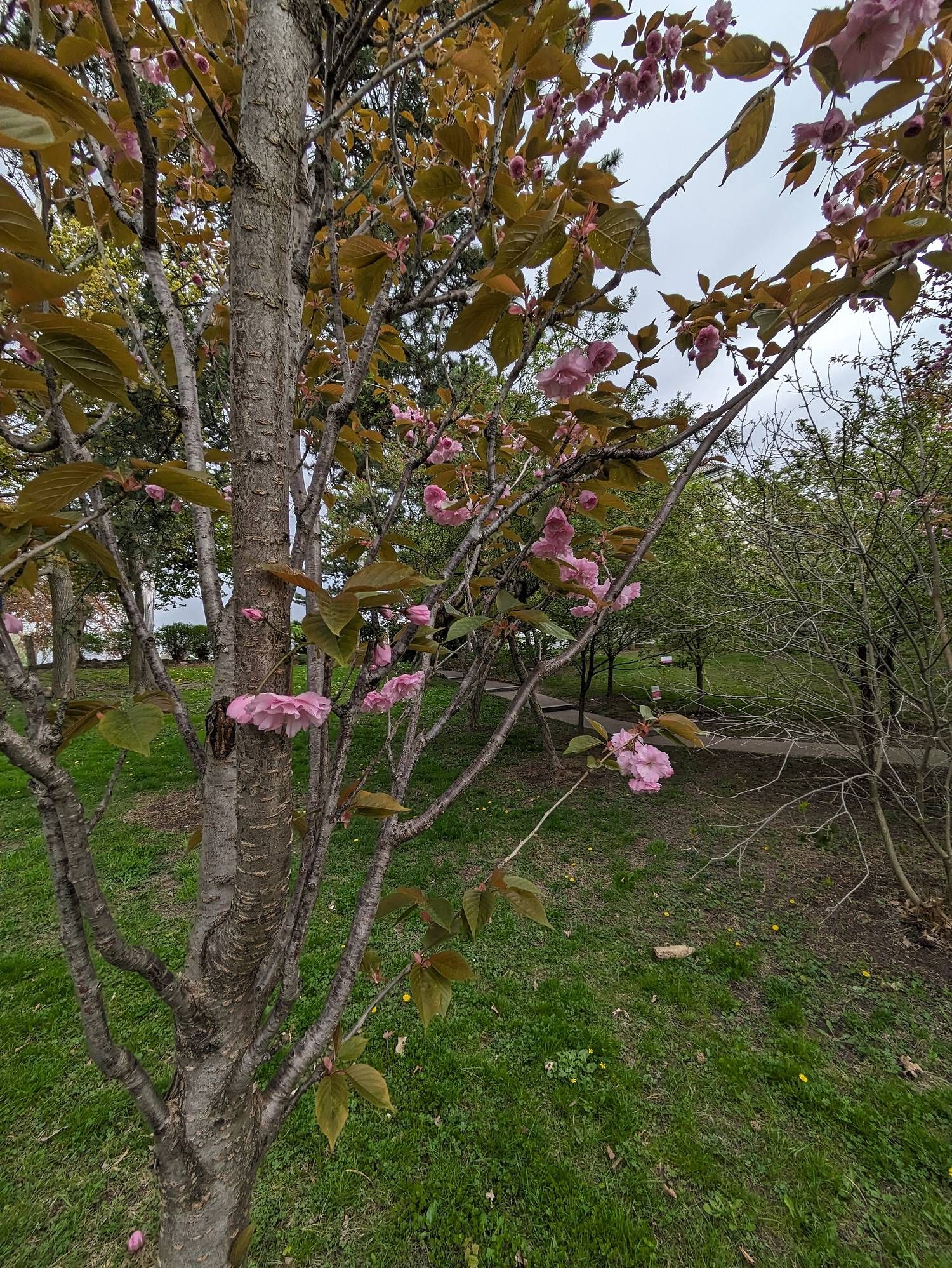
The ultrawide lens on the Pixel 7a is, in an interesting twist, actually wider than what you'll find on the Pixel 7 by six degrees. In taking photos with both phones back-to-back, it's a noticeable difference, and it continues to draw attention to a sensor on Google's 2022 smartphone that, frankly, might not deserve the word "ultrawide" in comparison with other phones on the market today. That said, photos of the same subject tended to look a bit darker when shooting ultrawide, so you'll want to be careful when and where you employ it — even cloudy days made for a major difference.

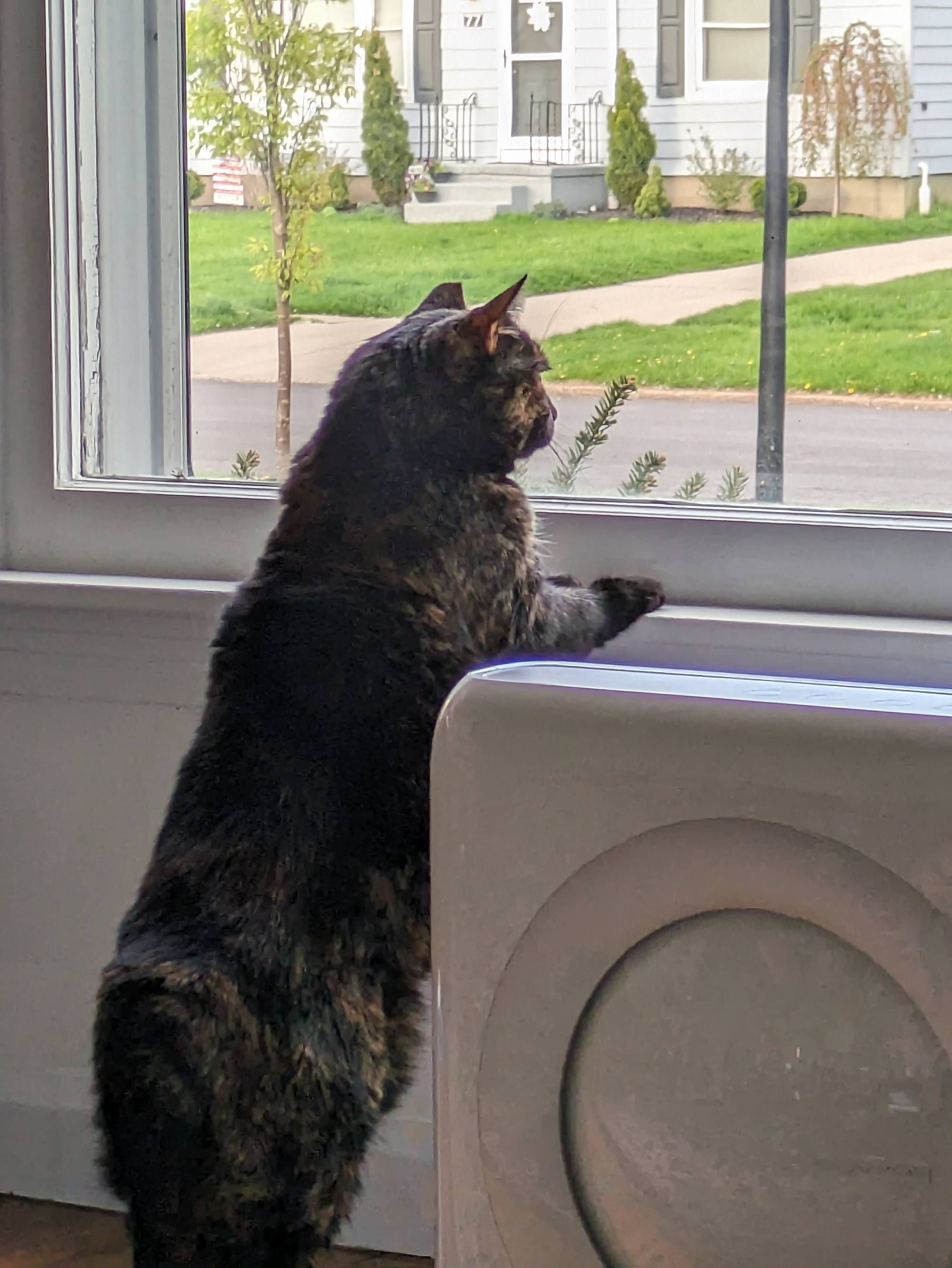
A lesson in not zooming in too far.
Overall, this is the most boring photos have ever been on a Pixel phone, and frankly, that's a good thing. Even when utilizing new hardware, it's tough to tell which Pixel 7 device these photos were taken on — as long as you keep your zooming to a minimum. While 2x digital zoom looks fine, details disappear pretty quickly once you crop in any farther.
In my earliest impressions of the phone's video quality, I found 1080p recordings not too shabby, and I was really impressed by the phone's ability to adjust for my shaky hands, even as I zoomed in on a subject. Image and video stabilization shined on the Pixel 7 series last year, and I'm happy to see a similar performance here. Also, Google now supports 4K recording on all rear and front cameras, though the latter is limited to 30FPS.
Battery life
My thoughts on the Pixel 7a's battery life can, truthfully, be split up into two sections: before and after a complete factory reset following the phone's official announcement at Google I/O. In the run-up to our initial publication of this review, my battery life was absolutely terrible, delivering some of the worst performance I've seen on Android in this decade. I'm talking three to four hours of screen-on time with light-to-moderate use of Wi-Fi on its best days. Just take a look at these numbers:
A bunch of battery charts from throughout my first week with the phone.
Let's focus on my experience first, and then I'll rope in the experiences of other editors at AP. While I think the battery charts shared above really speak for themselves, allow me to expand on how my time with the Pixel 7a was spent.
So, a couple of caveats. First up: yes, I spent the vast majority of my time at 90Hz. I already described how the phone ships with Smooth Display disabled because of Google's battery concerns, but frankly, dropping down to 60Hz didn't help me survive past 8pm on a Saturday. While I'm sure some people manage their entire digital lives on their smartphone, mine is primarily meant for wasting time on (insert social network here), music and podcasts, and messaging. This is how I've used every phone I've reviewed during my tenure at Android Police, and it's how I reviewed this one.
Second: I did choose to transfer apps and account data from an older phone; in this case, my Pixel 7. Before you drop down to the comments to berate me for my decision, hear me out. Google's setup process puts a large emphasis on moving data over from an older phone, either via a tethered cable or through a cloud backup. If you're following along with the on-screen steps, the ability to skip this transfer isn't made apparent until several taps after Google tells you to connect your two devices together.
To me, it's clear that moving data between devices is considered an essential part of buying a new smartphone. While I know plenty of enthusiasts — including, occasionally, myself — prefer to set up a new device app by app, account by account, that's not what the typical buyer wants to do. Even if this is the cause behind my battery drain, that doesn't excuse the numbers I'm seeing.
Now, all of that said, other editors at AP — especially those who didn't active 90Hz mode and performed a clean setup without data transfer — saw radically different numbers than I did. So, after the initial review period, I factory reset my phone, bypassing Google's usual restoration process and installing apps straight from the Play Store. And, as expected, my experience changed pretty drastically. Granted, you're not going to squeeze two days of heavy use out of the Pixel 7a, but reaching five hours of screen-on time with low-to-moderate use? Totally doable. Here are some additional numbers:
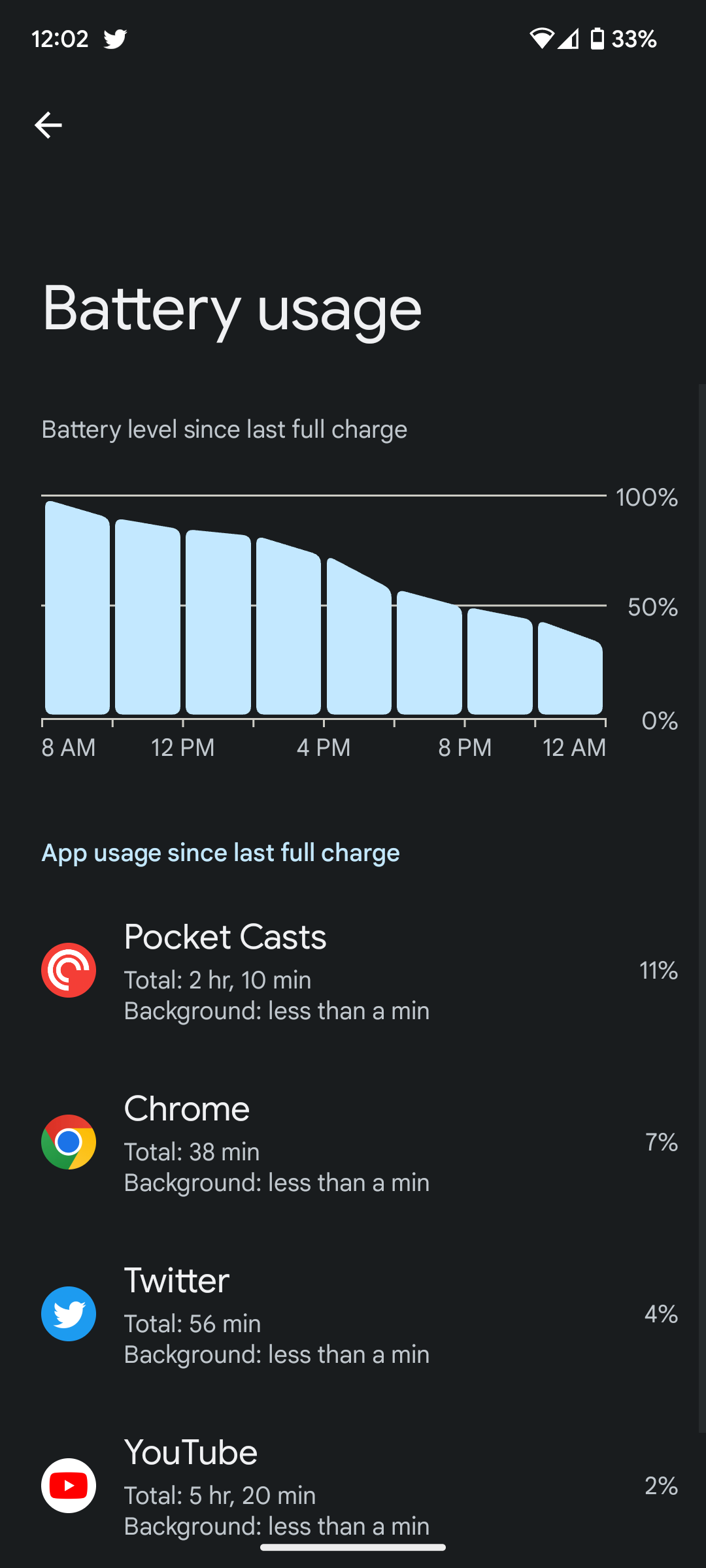
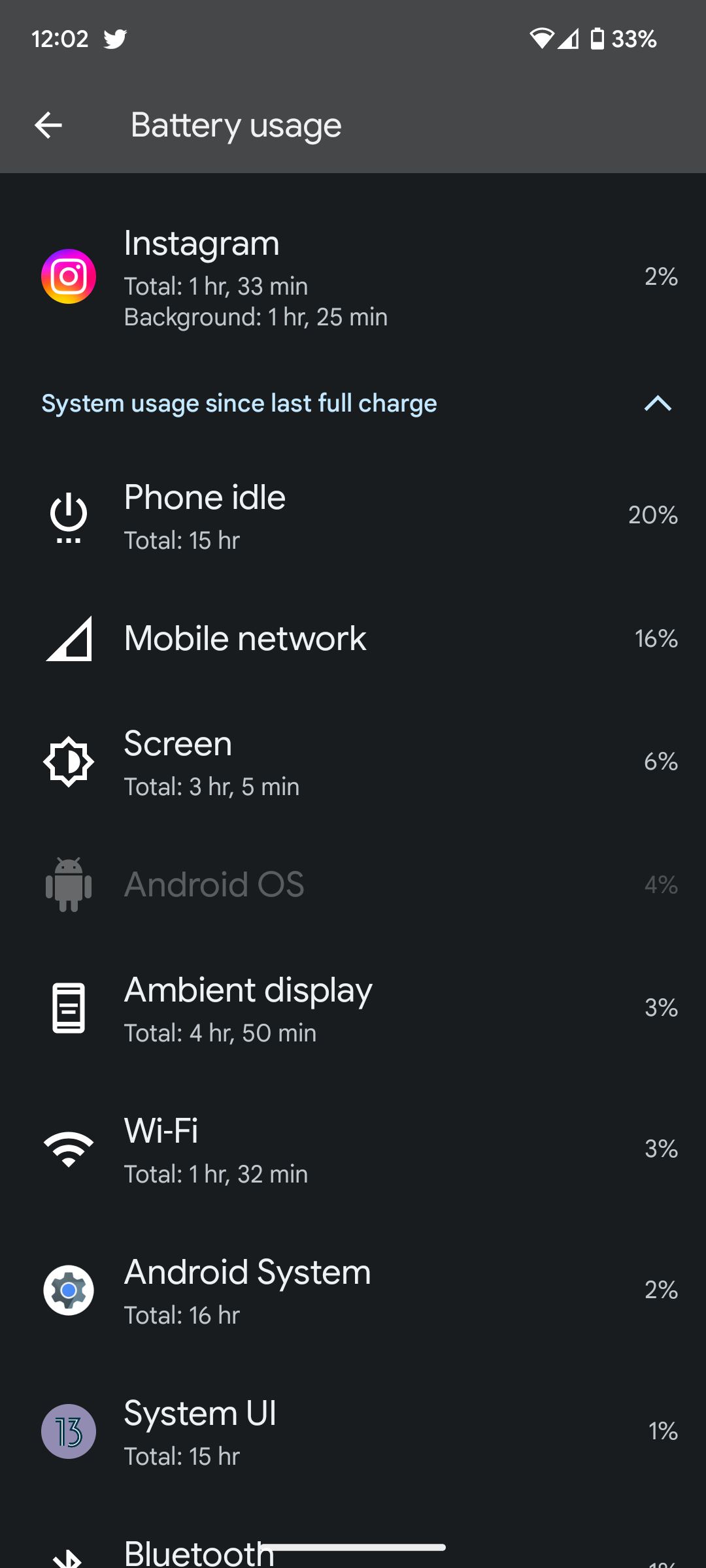
Keep in mind, this is with 90Hz and AOD enabled; the only thing I changed was performing a factory reset. I tried to ensure I installed the same apps from the Play Store as well, just to keep things equal.
Here's my main takeaway here: if you're getting this phone, and you can afford the time and patience, consider performing a clean install, without transferring data and accounts from your old phone. It definitely made a difference here, and not just on battery life — the entire device felt faster and smoother, as I touched on in the performance section above.
But none of this means I'm giving Google a break on my initial experience. The company pushes its new wireless transfer process in its Pixel 7a ad campaigns, but if it's enough to drastically reduce battery life and performance after setup, that's a real issue that buyers need to know about.
And, regardless of all of this, it's important to stress that five hours of screen-on time still isn't particularly impressive. When Snapdragon 8 Gen 2-powered devices — as expensive as they may be — are coming close to doubling those numbers, it's a sign that Google needs to figure out how to optimize its Tensor chipsets.
Do you know what really rubbed salt in my battery life-based wounds? Google's insistence on slow charging speeds. Granted, I wouldn't expect to see the company push the envelope here when the Pixel 7 Pro can't even reach 30W, but regardless, it's absolutely infuriating. If you're trying to top your phone up during dinner before heading out for a late night concert — and in my experience, you'll want to — expect to wait a while. Powering up from 50% to full took me over an hour.
For the first time ever, wireless charging is on an A-series device. Frankly, I'm not much of a believer in wireless charging outside of MagSafe — I just pick my phone up too much throughout the day, and at night, I'd rather plug my device in. While it's good to know you can power up on those scattered pucks and docks throughout your house, once again, keep time in mind.
Google confirmed to me that the Pixel 7a supports 5W with Qi-certified BPP chargers, which will take hours to fill from a dead battery. Again, I'm happy to see it here — companies like OnePlus will sell you a more expensive device without wireless charging — but if you're in the market for something speedy, you'll need to look elsewhere.
Competition
More than ever, the field is stacked against the Pixel 7a. Google's sub-$500 smartphone once reigned supreme as the obvious choice for an affordable, capable Android device, but in 2023, the competition — including Google itself — has caught up. So, if you're looking to spend around $500, what can your money get you?
Let's start with Google's most direct competition: the Samsung Galaxy A54. The latest entry in Samsung's massively-popular A-series is a relatively minor upgrade when compared to its previous generation, but for $450 — or less, if you can find it on sale or plan on buying through a carrier — it provides a solid alternative to the Pixel 7a. Its design closely aligns with the Galaxy S23 series, providing a flagship-style look for a midrange device, and much of its specs sheet (charging speeds, battery capacity, refresh rate, and even update support) manages to best Google.
That said, if you prefer the Pixel approach to software over Samsung's, an additional OS upgrade won't do you much good. Likewise, the photos captured by the Pixel 7a are leaps and bounds better than what we've seen from the A-series. It's a good alternative, but there isn't necessarily a clear winner between the two — rather, you'll need to consider what you personally want from a smartphone.
If you're dead set on buying a smartphone from Google, the Pixel 7 might actually be the better buy this year. I've already mentioned their design comparisons, but it's worth highlighting just what an extra hundred dollars gets you. A bigger display with better panel quality, a larger sensor capable of collecting more light, and — at least in my experience — more consistent battery life.
I can't even use the Pixel 7's age against the 7a when comparing the two together. Despite being seven months older, the Pixel 7 will see the same OS upgrades as the Pixel 7a, which leaves me scratching my head as to why most people should pick up the Pixel 7a when these prices are so similar. Perhaps carrier deals will manage to provide an answer.
Should you buy it?
The Pixel 7a earns my recommendation, but not without some massive caveats that weren't present in previous A-series devices. Google might impress me with its camera results and its software experience, but none of that matters if a phone can't survive to bedtime. I didn't enjoy revisiting the battery anxiety that plagued smartphones of the 2010s, and I wouldn't want anyone else to experience that feeling, either.
Resetting my device seemed to help, and in that case, I'm pleading with anyone buying this phone to go through with a clean install, no matter how much additional time it takes. I don't think this is a solution so much as a bandage, and I'll be closely watching the battery performance of future Pixel devices, including this summer's Pixel Fold.
That coral, though.
Even putting aside my battery life problems, its frequent overheating, dated design, and the increased price all work against Google's latest smartphone, leaving me feeling pretty chilly towards a Pixel for the first time in years. With the company's lineup more expansive than ever, I'm just not sure what the A-series is doing to stand out anymore. That jaw-dropping price from previous generations might reappear in various sales over the next few months, but it's not here at launch. Without it, I'm left wondering if this device amounts to much more than a slightly worse Pixel 7 for slightly less money. But hey, that might be what the market wants.

